Is Salkantay Trek, Peru, a Backpacking Summer Paradise? 8 Top Spots to Discover
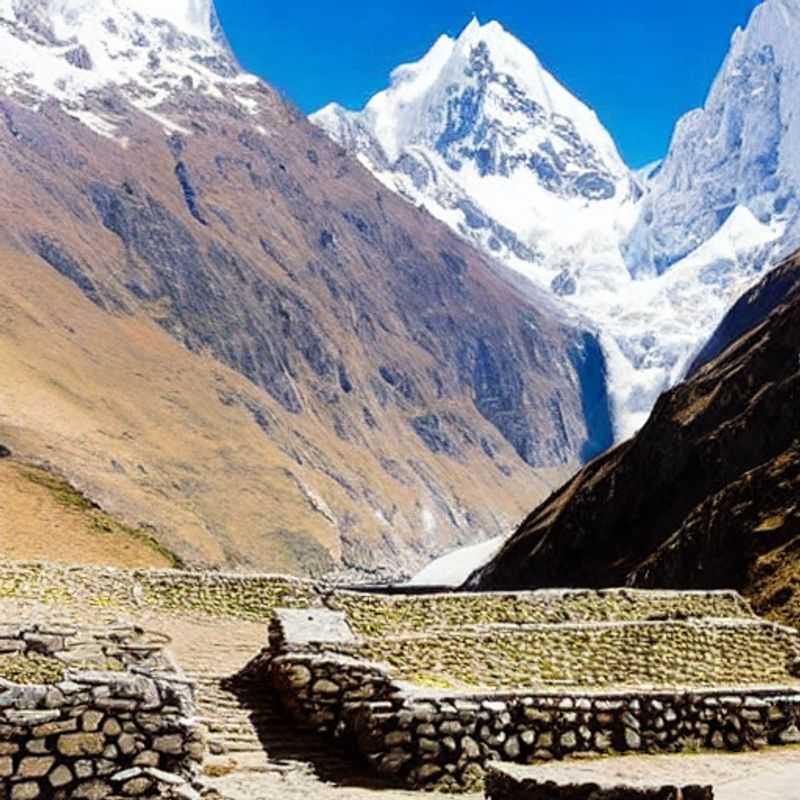
Salkantay Trek Backpacking Guide 2026: Your Ultimate Adventure Awaits
Embark on an unforgettable adventure with this comprehensive backpacking guide to the Salkantay Trek in 2026. This challenging yet immensely rewarding journey takes you through diverse Andean landscapes, from snow-capped mountains to lush cloud forests, culminating in the awe-inspiring arrival at Machu Picchu.
Planning is key for a successful Salkantay trek. We'll cover everything you need to know, starting with the best time to go. The dry season, from May to September, offers the most stable weather, though shoulder months like April and October can provide fewer crowds and good conditions.
Choosing the right Salkantay Trek itinerary is crucial. Most treks range from 4 to 5 days, with variations available to suit your fitness level and time constraints. Consider acclimatization time in Cusco as a vital step to prevent altitude sickness.
Packing smart is paramount for any backpacker. Focus on lightweight and moisture-wicking clothing. Essential gear includes a sturdy backpack (around 40-60 liters), a good sleeping bag rated for cold temperatures, waterproofs, hiking boots, trekking poles, and a reliable headlamp. Don't forget sun protection: sunglasses, sunscreen, and a hat are non-negotiable at high altitudes.
Understanding the Salkantay Trek difficulty is important. This is not a beginner's trek. Expect steep ascents, high mountain passes (the Salkantay Pass is the highest at over 15,000 feet), and long trekking days. Prior physical conditioning, including cardiovascular exercise and strength training, will significantly enhance your experience.
When it comes to booking your Salkantay Trek, you have options: guided tours offer convenience and support, including porters and cooks, while independent trekking allows for more flexibility but requires more self-sufficiency and planning, especially regarding campsite reservations and permits.
Food and water safety are critical. If you're not on a guided tour, carry a water filter or purification tablets. High-energy snacks are your best friend on the trail. Learn to recognize symptoms of altitude sickness and know when to rest and descend.
Finally, remember that the Salkantay Trek is more than just a hike; it's a cultural immersion. Respect the local communities, embrace the stunning natural beauty, and prepare for an adventure of a lifetime in 2026.
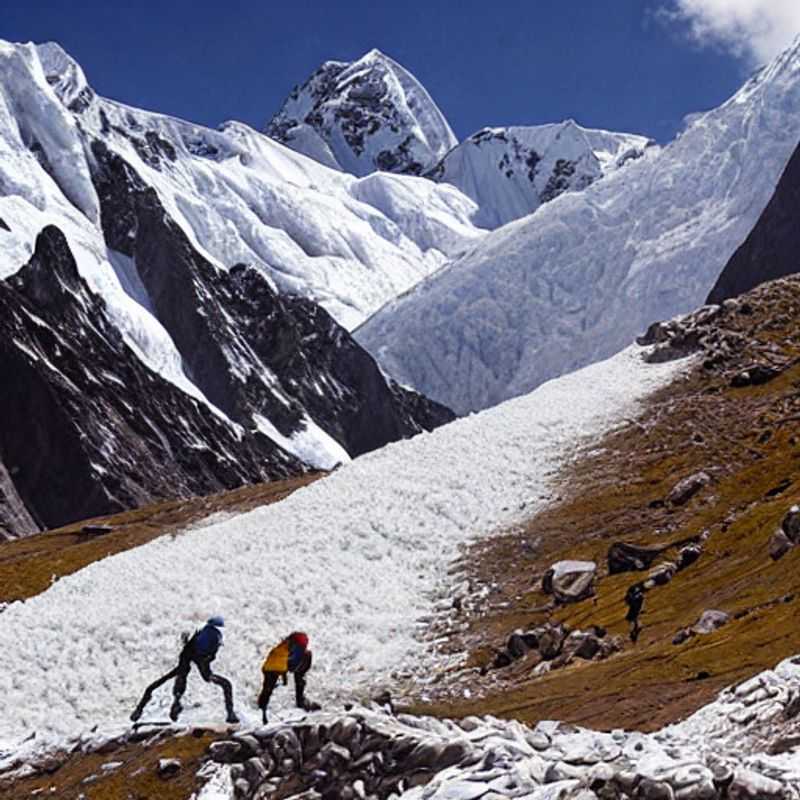
Salkantay Trek in Summer: Sun's Out, Inca Myths Out! (Is It REALLY That Hot?)
Peruvian Summer Solstice: Trekking the Salkantay & Chasing Inca Legends
Decoding the Salkantay: A Tech-Nomad's Guide to Summer Trekking in the Andes
Sun, Sweat, & Salkantay: My Summer Trek & the Lost City of Gold (Spoiler: No Gold, But Amazing Views!)
Is Salkantay Trek a Summer Scorcher? A Data-Driven Look at Andean Adventures
Salkantay Trek in July: Beating the Heat (and the History!)
Hey fellow wellness wanderers! Ready for a digital detox with a dash of ancient mystery? Let's trek the Salkantay Trail in Peru during the dry season (May-September), when the warm weather makes it an ideal time to explore. I’m your tech-savvy, myth-busting tour guide, and we’re about to embark on a journey that blends breathtaking landscapes with fascinating Inca history.
First things first: budgeting. Expect to spend around $800-$1500 USD for a 5-day trek, excluding flights. This includes a guided trek (around $500-$800 USD, depending on the level of luxury you choose), food (budget about $20-$30 USD per day), entrance fees to Inca sites (approximately $70 USD), and transportation to and from Cusco (around $30-$50 USD). Remember, this is just an estimate; splurging on extra activities or opting for a more luxurious experience will naturally increase the cost.
The Salkantay Trail is a spiritual journey. Expect stunning scenery: snow-capped mountains, lush cloud forests, and vibrant valleys. The weather is typically sunny and dry during the day, but nights can get chilly, so pack layers! The trail itself can be challenging, so a good level of fitness is recommended. You’ll be surrounded by the sounds of nature – birdsong, rushing rivers, and maybe even the occasional llama bleating.
The local Quechua people are incredibly welcoming. You'll encounter their rich culture through their vibrant textiles, traditional dances, and their delicious cuisine. Expect hearty meals featuring potatoes (Peru's staple crop), quinoa, and alpaca meat. Try the local chicha morada (a non-alcoholic drink made from purple corn). Remember to always be respectful of their customs and traditions – a simple "gracias" goes a long way.
You’ll notice a mix of fellow travellers: seasoned adventurers, wellness seekers like yourself, and a few Instagram-obsessed souls. The atmosphere is generally one of camaraderie and shared awe. You'll likely be sharing stories around campfires under a blanket of stars.
While the Salkantay trek itself doesn't involve solving any grand mysteries, the journey is filled with whispers of Inca legends and the lingering presence of a rich history. You'll pass ancient Inca ruins, walk paths used by generations, and immerse yourself in a culture that still holds deep spiritual connections to the land.
And the most important tip? Embrace the unexpected!. Be open to spontaneous detours, unexpected encounters, and those moments where the ancient whispers of the Andes meet the digital hum of your smartphone camera. Happy trekking!
Total Estimated Cost: $800 - $1500 USD (excluding flights)
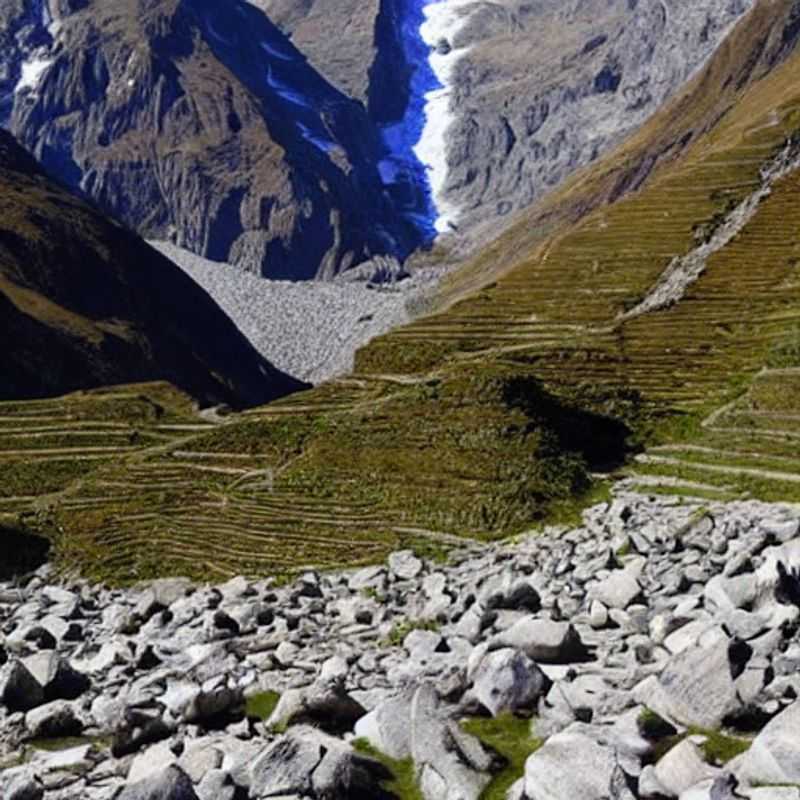
You may also like
Salkantay Trek in Summer: Mythbusting the Crowds (and Melting Glaciers!)
Peruvian Peaks & Summer Sun: Is the Salkantay Trek REALLY Less Crowded?
Sun's Out, Trekkers Out? Decoding the Salkantay Summer Season
Salkantay Trek: A Summer Solstice Adventure (or a Sweat-Soaked Saga?)
Ancient Ruins & Modern Heat: Planning Your Salkantay Trek Summer Escape
Conquering the Salkantay: Fact-Checking the Summer Crowd Claims
Decoding the Inca Trail's Cousin: Salkantay Trek's Summer Secrets
Off-Season or Bust? Summer Trekking in the Andes: Salkantay's Surprises
Salkantay Summer Solstice: Myth, Mystery, and Mountains
Beat the Inca Trail Rush: Is Salkantay Trek the Summer Solution?
Greetings, fellow wellness wanderers! Ready to ditch the digital detox and embrace a digital detox *with* adventure? This Salkantay Trek guide is for the intrepid solo backpacker seeking a less crowded, revitalizing winter escape in the Peruvian Andes. Forget the summer hordes; winter offers a different kind of magic.
The Salkantay Trek in winter (June-August) presents crisp, clear days perfect for hiking. Expect cooler temperatures, even some snow at higher altitudes. Pack layers! Think merino wool, thermal underwear, and a waterproof jacket – the weather can be unpredictable. Average daily temperatures range from 40°F (4°C) to 60°F (15°C).
As for the trek itself, you can opt for guided tours (expect to pay around $300-$600 USD for a 4-5 day trek, including accommodation, meals, and a guide). Independent trekking is possible, but strongly discouraged unless you're an experienced hiker with excellent navigation skills. Food along the route is simple but satisfying – think hearty soups, quinoa dishes, and plenty of potatoes. You can expect to pay around $15-$30 USD per day for food.
Transportation to and from Cusco, the starting point, is readily available. Buses range in price, depending on comfort level, from $5-$20 USD. Once in Cusco, immerse yourself in the Inca culture. Explore the San Blas artisan neighborhood, its cobblestone streets echoing with the rhythmic beat of Andean panpipes. You might also encounter local Quechua music. The people are generally friendly and welcoming, though perhaps a little more reserved than in other tourist hotspots.
The architecture in Cusco blends Inca and Spanish colonial styles – a fascinating juxtaposition of history. The local flora showcases hardy Andean plants, well-adapted to the high altitude. Llamas and alpacas are frequently seen grazing in the highlands. Note that many locals keep dogs, and it's important to be respectful of their spaces. Regarding dining in Cusco, you can find everything from budget-friendly street food ($5-$10 USD) to upscale restaurants ($20-$50 USD).
Remember to factor in costs for entrance fees to sites along the trek (approximately $70 USD for the Inca Trail Permit if you choose to include it in your Trek, this is NOT required for Salkantay trek) and souvenirs. Your total cost for a 5-day/4-night adventure can therefore vary significantly, from $400 to $1000 USD, depending on your chosen trekking style, accommodation, and dining preferences. Budget accordingly!
Total estimated cost (excluding flights): $400-$1000 USD (highly variable). This is a rough estimate and can fluctuate depending on your personal spending habits and choice of accommodation, trekking style (guided vs unguided) and how much money you spend on food and souvenirs.
So, pack your bags, charge your devices, and prepare for an unforgettable journey blending adventure, wellness, and a touch of ancient mystery. The Salkantay Trek awaits!
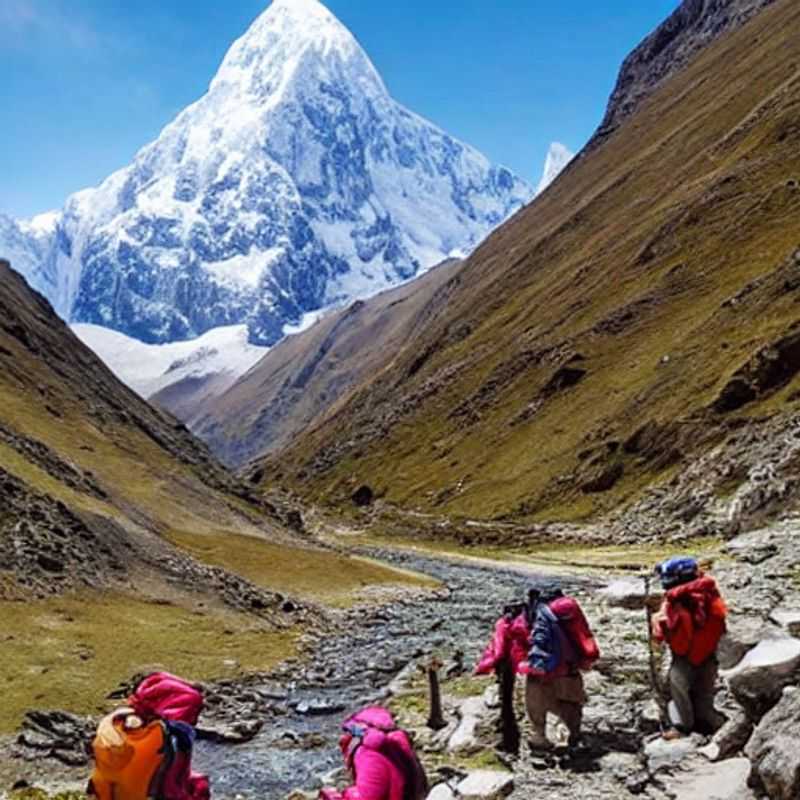
You may also like
Salkantay Trek in Summer: Sun's Out, Inca Ruins Out! (Is It REALLY Worth It?)
Decoding the Salkantay Trek: Sun, Sweat, and Inca Secrets (A Summertime Adventure)
Conquering the Salkantay: A Summer Solstice Trek Through Legend and Lore
Salkantay Trek Summer Edition: Mythbusters & Mountain Views (A Digital Nomad's Guide)
Sun-Kissed Andes: Is the Salkantay Trek the Ultimate Summer Escape?
Trekking Salkantay in Summer: Data-Driven Decisions for an Epic Adventure
Salkantay's Summer Solstice Mystery: Uncovering Inca History on Foot
Beyond the Tourist Trail: A Summer Salkantay Trek for the Curious Explorer
Salkantay Summer Showdown: Hiking vs. History (Which Wins?)
The Salkantay Trek: A Summer Journey Through Time & Terrain (Tech-Savvy Traveler's Guide)
Alright, Wellness Warriors! Ready to ditch the detox teas and embrace a real adventure? Let's talk Salkantay Trek in Peru during the winter (their summer!), a journey that blends Inca history, breathtaking landscapes, and enough altitude to test even the most seasoned yogi. Forget your usual spa retreats – this is a wellness pilgrimage unlike any other.
First things first: the weather. Winter in the Andes means sunshine, cooler temperatures (think 10-20°C during the day), and less rain than the summer months. Pack layers! Trust me, you’ll need them. This weather is perfect for trekking, though nights can be chilly, so a good sleeping bag is essential.
Now, the trek itself. Expect stunning mountain vistas, lush cloud forests, and the incredible feeling of accomplishment as you navigate the trails. The entire trek usually takes 4-5 days, with various tour operators offering different packages. A basic package with a guide, mule support, and camping gear can cost anywhere from $600-$1200 per person, depending on the level of luxury you prefer. Budget around $30-$50 per day for meals, which mostly consist of hearty Andean fare like quinoa, potatoes, and hearty soups. You'll find plenty of local markets and restaurants along the way to refuel and resupply.
Local life is vibrant and rich. Along your trek, you’ll encounter friendly Quechua communities, some still maintaining ancient traditions. You might witness traditional weaving or hear the enchanting sounds of panpipes echoing through the mountains. Expect to see llamas and alpacas – adorable, fluffy additions to the landscape. The architecture is a mix of traditional adobe houses and modern structures, a testament to the region's evolving culture. Music is a big part of the Andean experience; you might encounter traditional songs and instruments during your travels. The vibrant colors of local textiles, food markets, and even the mountainous landscape are a feast for the senses.
Transportation to and from the trek starting point usually involves a bus journey from Cusco which can cost anywhere from $10 to $30, depending on the bus type and distance. Internal travel during the trek is part of the package you selected, but budget for additional transportation if you plan on extending your stay in the area afterward. Expect to immerse yourself in the vibrant atmosphere of Cusco itself, a city brimming with Incan history and culture. Cusco, itself, offers a unique blend of traditional Andean and Spanish colonial architecture, a visual delight for the culturally curious.
The total cost of your adventure can fluctuate significantly based on your chosen tour operator, food preferences, and additional activities, but a reasonable budget should be around $1000 - $1800 for a 5-day trek including all expenses (excluding flights to Peru). Remember to factor in travel insurance! It's essential for any adventure like this.
So, ditch the spa day and embrace the Salkantay Trek – a journey that nourishes your soul, body, and mind in ways you never imagined. Happy trekking!
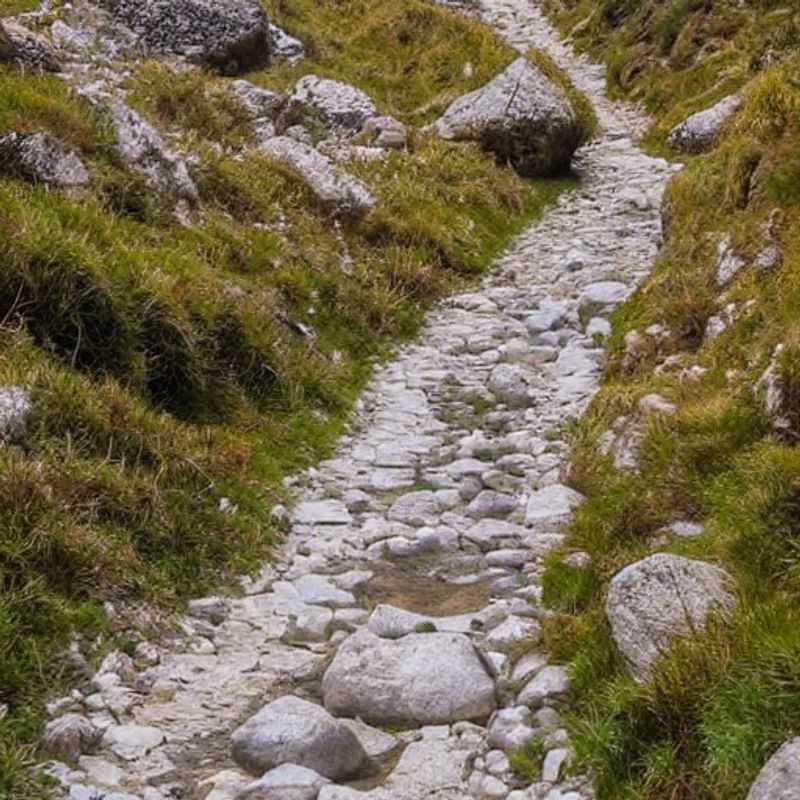
You may also like
Decoding the Salkantay Trek: Is Peru's Legendary Path a Summer Sizzler (or a Snow-Day Surprise)?
Sun, Snow, and Salkantay: Cracking the Code of Peru's Summer Trek
Mediterranean Magic vs. Andean Altitude: A Tech-Nomad's Guide to Summer Trekking in Peru
Salkantay Trek in Summer: Myth, Mystery, and a Microclimate's Mayhem
Peruvian Peaks and Perfect Temps: Is Salkantay Trek the Summer Escape Your Algorithm Needs?
Data-Driven Trekking: Analyzing the Salkantay Trek's Summer Suitability
Greetings, fellow wellness adventurers! Ready to ditch the digital detox and embrace a Salkantay Trek adventure? This isn't your average hike; we're blending ancient Incan legends with modern tech to uncover the magic of the Andes during the Peruvian winter (which, conveniently, boasts a Mediterranean-like climate – think comfortable temperatures!). As your tech-savvy, myth-busting tour guide, I'll navigate you through this incredible journey.
First, let's talk logistics. The Salkantay Trek typically takes 4-5 days and involves varying levels of physical exertion. Expect stunning scenery, from lush cloud forests to snow-capped peaks. Your average daily cost, excluding flights and pre-trek accommodation, will be around $50-80 USD, covering meals (delicious Andean cuisine – think hearty potatoes, quinoa, and alpaca!), transport within the trek (mules and porters will carry your gear; a true luxury!), and basic camping gear rental. Entrance fees to the park add around $60 USD to your total.
Speaking of food, you'll experience a delightful blend of Peruvian flavors. Local markets offer fresh fruits like lucuma and chirimoya, alongside vibrant vegetables used in traditional dishes. Don’t miss trying cuy (guinea pig – a local delicacy!). Expect to spend approximately $15-25 USD per day on food, depending on your choices.
Transportation costs will vary depending on your starting point. From Cusco, you might use a colectivo (shared taxi) for roughly $5-10 USD. During the trek, remember, mules and porters are included in the trek packages but you'll need to arrange transport to and from your starting and ending points.
The people you’ll meet are incredibly welcoming. Many locals along the trail offer handcrafted souvenirs and snacks. Their traditional clothing and music add to the rich cultural tapestry of the trek. The atmosphere is generally relaxed and positive, with fellow trekkers sharing stories and experiences. You'll hear the rhythmic sounds of nature – birdsong, rushing rivers, and the wind whistling through the mountains. The weather, generally mild during winter, may see sun one minute and a passing shower the next, so pack layers.
Architectural styles you'll see reflect the Inca heritage, with remnants of ancient terraces and pathways. You might spot llamas and alpacas grazing peacefully in the high-altitude pastures. While dogs are common companions in the villages, expect the typical Andean flora with diverse plants that have adapted to the altitude.
The overall mood is one of awe and wonder. The combination of stunning landscapes, fascinating culture, and the chance to push your physical and mental limits create an unforgettable experience. Remember to pack appropriate clothing, good hiking boots, and sunscreen. Don't forget your camera to capture the breathtaking views!
Estimated total cost for a 5-day Salkantay Trek (excluding flights and pre/post-trek accommodation): $400 - $600 USD. This is an estimate, and costs can vary. But the experiences? Priceless.
So, pack your bags, charge your devices, and prepare for an adventure that blends the ancient and the modern. Let's uncover the secrets of the Salkantay Trek together!
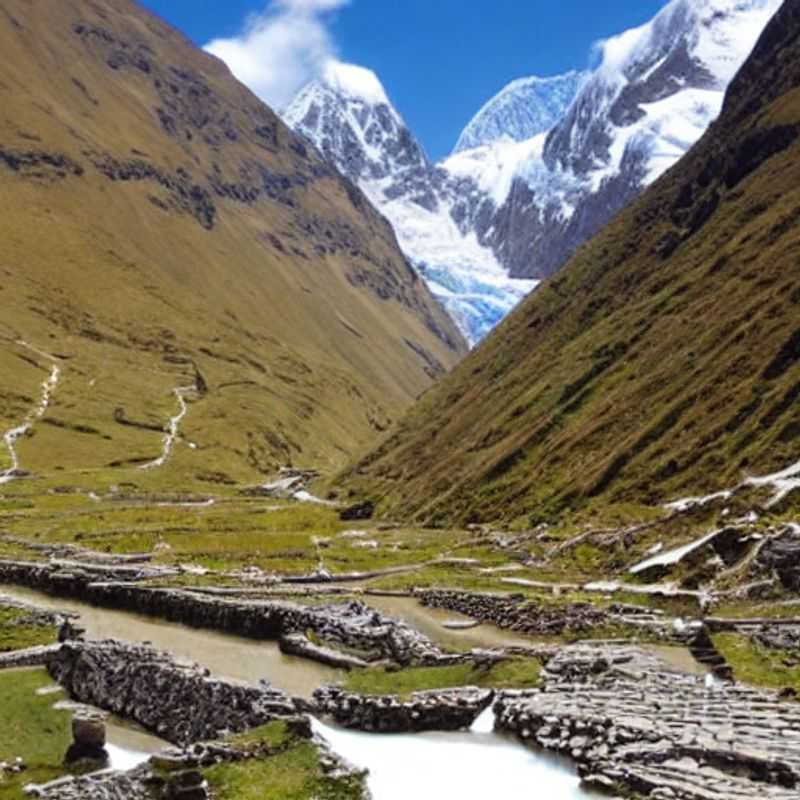
You may also like
Chasing the Sun on the Salkantay Trek: Is Peru's Legendary Path a Summer Scorcher (or a Sightseeing Symphony)?
Salkantay Trek in Summer: More Daylight, More Mysteries, More Inca Magic (and Maybe More Sweat)?
Decoding the Salkantay Summer Solstice: Sun, Sweat, and Inca Secrets on Peru's Epic Trek
Peruvian Summer Solstice Adventure: Cracking the Salkantay Trek's Daylight Code
Sun's Out, Inca's Out (Maybe): A Data-Driven Look at the Salkantay Trek's Summer Suitability
Salkantay Trek's Summer Showdown: Myth vs. Reality – Is It Worth the Extra Daylight?
Greetings, fellow wellness wanderers! Ready to ditch the digital detox and embrace a digital detox *with* a purpose? This winter, let's trade your yoga mat for trekking poles and explore the Salkantay Trek in Peru – a journey where longer daylight hours mean *more time for mindful exploration*! Prepare for a blend of ancient Incan history, breathtaking landscapes, and enough adventure to invigorate your soul.
Winter in the Andes (June-August) brings longer daylight hours, perfect for maximizing your sightseeing. Expect crisp, sunny days with cooler nights – pack layers! The average temperature hovers around 10-15°C (50-59°F) during the day, dropping significantly at night. Don't underestimate the power of the Andean sun; sunscreen and a hat are essential.
The Salkantay Trek typically takes 4-5 days, and you can choose from various packages. A budget-friendly option (excluding flights and visa) might cost around $500-$800 including guided tours, basic accommodation (rustic lodges or camping), and food. Luxury options can climb to $1500-$3000+. Factor in around $30-$50 per day for food and drinks outside of your package. Expect delicious meals featuring local potatoes, quinoa, and hearty stews. Try the cuy (guinea pig) if you're adventurous!
Transportation to the trailhead usually involves a bus from Cusco (approx. $10-$15) and potentially further local transport depending on your starting point. Internal transport during the trek is generally included in your tour package.
The local Quechua people are incredibly welcoming. You'll encounter vibrant local markets selling handicrafts and traditional textiles. Music is a big part of their culture – expect to hear panpipes and Andean flutes echoing through the mountains. Llamas and alpacas are common sights, grazing peacefully along the trail. The architecture blends ancient Incan stonework with more modern styles in the towns and villages you'll pass through. The trail itself offers breathtaking scenery – snow-capped mountains, lush cloud forests, and vibrant valleys.
While trekking, you'll find yourself surrounded by a diverse group of travelers – some solo backpackers like yourself, others in larger groups. The overall atmosphere is generally one of shared excitement and mutual respect for the environment and the culture. Remember to pack light, stay hydrated, and respect the local traditions and customs. Most importantly, enjoy the unique blend of adventure, history, and wellness that the Salkantay Trek offers. Total estimated cost (excluding flights and visa): $700 - $3050 (depending on your package and spending habits).
Enjoy your journey, and may your adventure be filled with breathtaking views and enriching experiences!
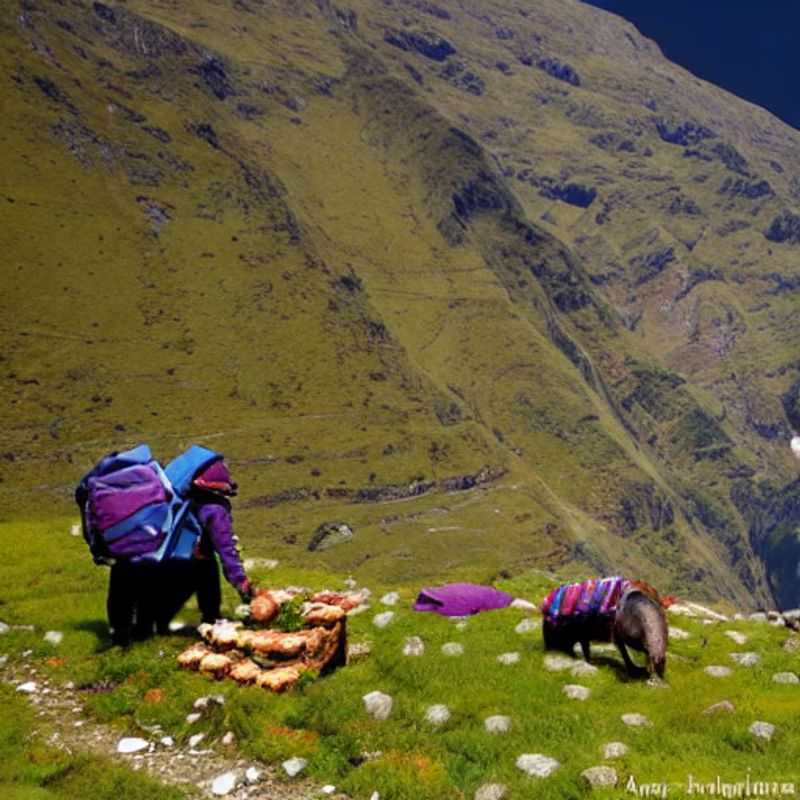
You may also like
Decoding the Salkantay Trek: Sun, Spice, & Seasonal Eats (Is Summer the Secret Ingredient?)
Salkantay Trek in Summer: A Digital Nomad's Guide to Andean Gastronomy & Optimal Produce
Sun-Kissed Trails & Seasonal Delights: Your Salkantay Trek Summer Food Adventure
Peruvian Produce Power-Up: Planning Your Salkantay Trek Feast (Summer Edition)
Myth, Mountains, & Mangoes: Unpacking the Salkantay Trek's Summer Food Scene
Salkantay Trek's Summer Bounty: A Tech-Savvy Trekker's Guide to Local Cuisine & Seasonal Produce
Greetings, fellow wellness wanderers! This digital nomad's guide is your key to unlocking the culinary secrets of the Salkantay Trek in Peru's winter (May-September). Prepare for an adventure that's as nourishing for the soul as it is for the stomach!
Winter in the Andes brings a unique bounty. Expect to find hearty, warming foods reflecting the season. Potatoes, in their countless varieties, are a staple. Think creamy papa a la huancaína (potatoes in a spicy cheese sauce) and robust cuy (guinea pig – yes, it's a delicacy!). Quinua (quinoa), a nutritional powerhouse, is abundant, often served as a side or in hearty soups. Expect to encounter fresh fruits like lucuma (a creamy, caramel-flavored fruit), and chirimoya (custard apple), adding a touch of sweetness to your meals.
Local markets are vibrant hubs of activity. Bargaining is expected – have fun with it! You’ll find fresh produce and local specialties at prices varying depending on location and demand. Expect to pay around $5-10 USD per day for fresh produce and simple meals from street vendors. Eating at local restaurants will cost $15-30 USD per meal, depending on the establishment and your choices. Always try to support local businesses and sample regional specialties.
The weather during winter is crisp and sunny during the day, but nights can get chilly. Pack layers! The higher altitudes mean thinner air, so take it easy and stay hydrated. The local people are incredibly friendly and welcoming, often sharing stories and traditions. You'll hear Quechua, the native language, mingling with Spanish. The sounds of nature – the rush of rivers, the chirping of birds – provide the soundtrack to your trek.
Traditional Andean music often accompanies local celebrations and market gatherings. It's a blend of ancient rhythms and modern influences. Llamas and alpacas are common sights, their soft wool adding to the region’s charm. The architecture showcases a blend of Inca influences with Spanish colonial styles – stone walls, red-tiled roofs, and colorful details create picturesque villages.
Transportation costs vary widely depending on your mode of travel. Shared shuttles can cost $20-40 USD per leg, while hiring a private vehicle is much more expensive. You can expect to pay around $100-200 USD for a guided trek, depending on the length and the services offered. Factor in entrance fees to various sites along the trail.
Remember, this is a rough estimate, and your individual spending will vary. However, for a 4-day/3-night trek, you should budget around $300-500 USD for food, transport, and the trek itself, excluding accommodation (which can range from basic camping to more luxurious lodges). This is just a guide, always factor in unexpected expenses. Prepare for adventure, embrace the unexpected, and enjoy the incredible tastes of the Salkantay Trek!
Total estimated cost for a 4-day/3-night Salkantay Trek (excluding accommodation): $300-500 USD.
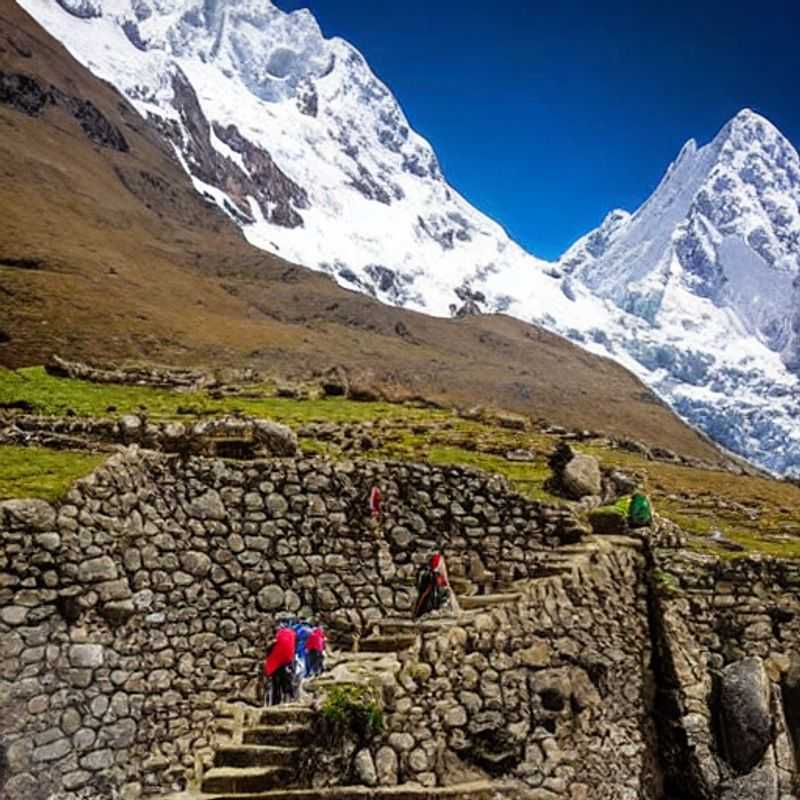
You may also like
Fewer Tourists, Shorter Lines: Is the Salkantay Trek in Summer Your Secret Weapon?
Conquering the Salkantay: Myth, Mystery, and Machu Picchu—Without the Crowds (A Summer Solstice Adventure)
Sun, Sweat, and Shorter Queues: Cracking the Salkantay Trek's Summer Code
Decoding the Inca Trail's Alternative: A Data-Driven Look at Salkantay's Summer Season
Salkantay Trek Summer Showdown: Legends, Landscapes, and Less Waiting
Beat the Heat (and the Crowds): A Digital Nomad's Guide to the Salkantay Trek in Summer
Mysteries of the Andes: A Summer Expedition to Salkantay, Where History Meets Fewer Tourists
Greetings, fellow wellness wanderers! Ready to ditch the tourist throngs and embark on a rejuvenating Salkantay Trek in the Peruvian winter? Fewer tourists means shorter lines at popular attractions, leaving you more time to connect with the majestic Andes.
Picture this: crisp, clear winter air, the scent of coca leaves mingling with the earthy aroma of the mountains. The Salkantay Trek, during its quieter winter months (May-September), offers a unique opportunity for introspection and profound connection with nature. Expect chilly nights, especially at higher altitudes, so pack layers!
The Inca Trail may be legendary, but Salkantay whispers its own ancient tales. This less-traveled path unveils breathtaking landscapes, from cloud forests teeming with orchids to snow-capped peaks piercing the sky. Expect to encounter llamas and alpacas grazing peacefully along the trail, adding a touch of serenity to your journey.
Local cuisine is a delightful adventure. Indulge in hearty Andean staples like hearty cuy (guinea pig – a local delicacy!), papa a la huancaína (potatoes in a creamy cheese sauce), and chicha morada (a refreshing purple corn drink). A typical meal in a local restaurant will cost you around $10-15 USD.
The local people are incredibly welcoming and proud of their traditions. You'll likely encounter Quechua-speaking communities, whose rich culture is woven into the fabric of the trek. Observe their daily lives, perhaps even partake in a traditional Pachamanca (a subterranean cooking method). Remember to be respectful of their customs and traditions.
Transportation costs vary. Getting to the trailhead often involves a bus journey from Cusco (approximately $10-15 USD). During the trek itself, you'll be accompanied by your trekking team (guides, cooks, porters) A typical 4-day/3-night trek will cost between $400-$600 USD, inclusive of accommodation, food and porter services. This excludes flights and personal expenses.
The sounds of the Andes are equally captivating: the gentle rustling of leaves, the distant cry of a condor, the rhythmic strumming of Andean panpipes around a campfire. This is a trek for those seeking solace and deeper understanding of themselves and nature.
Architectural styles reflect a blend of Inca heritage and colonial influences in nearby towns. The stonework of ancient ruins contrasts beautifully with the vibrant colors of more modern buildings. Remember that altitude sickness is a real concern. Take it slow, hydrate well, and acclimatize before starting the trek.
Overall, your wellness journey through the Salkantay Trek, during the winter months, promises a deeply enriching experience. Expect to spend around $500 - $700 USD (excluding flights) for a four-day trek, including accommodation, food, and transportation. This is an investment in your well-being and a journey to remember! Pack your bags, leave your worries behind, and let the magic of the Andes unfold.
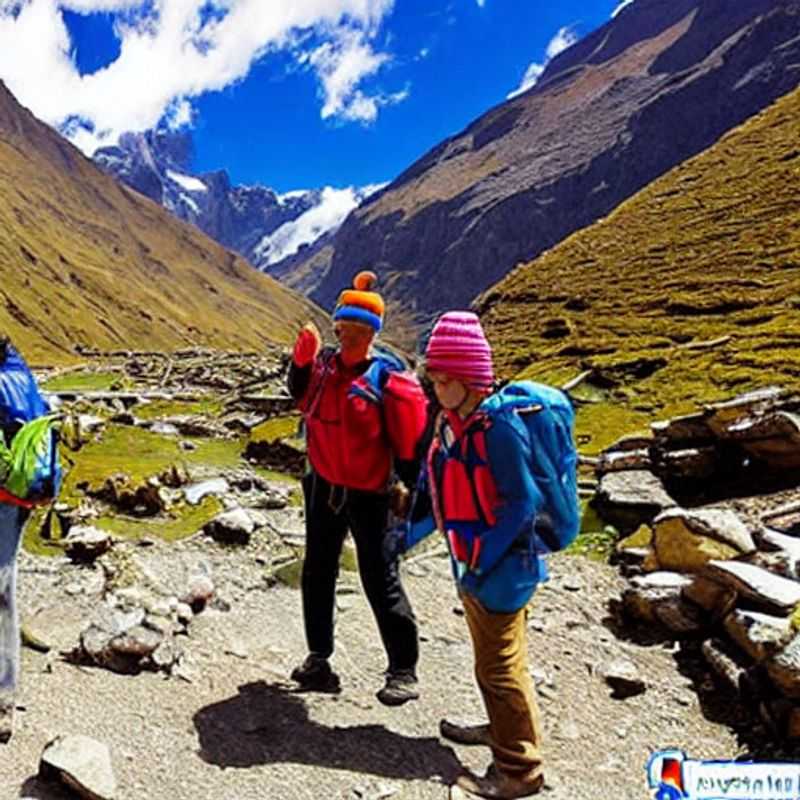
You may also like
Salkantay Trek in Summer: Sun's Out, Inca Ruins Out! (Is it REALLY a good idea?)
Peruvian Summer Solstice: Trekking the Salkantay Trail & Chasing Lost Inca Legends
Decoding the Salkantay: A Tech-Nomad's Guide to Summer Trekking in the Andes
Sun, Sweat, & Salkantay: A Data-Driven Approach to Peru's Iconic Trek (Summer Edition)
Mythbusters: Salkantay Trek in Summer – Separating Fact from Fiction (with GPS data!)
Salkantay Summer Solstice Adventure: Uncovering Inca Secrets with Drones and Determination
Greetings, fellow wellness wanderers! Ready to ditch the digital detox and embrace a Salkantay Trek adventure this winter? Forget those overcrowded tourist traps; we're diving into the heart of Peruvian culture, blending ancient legends with modern exploration. This isn't your grandma's sightseeing tour; this is a journey for the digitally-savvy soul seeking equilibrium amidst stunning landscapes.
Now, Salkantay Trek during the Peruvian winter (June-August) offers a unique experience. Expect crisp, cool air, perfect for those invigorating hikes. The weather hovers around 10-15°C (50-59°F) during the day, but nights can get chilly, so pack layers! Rainfall is minimal during this period. Remember to check the specific weather forecast closer to your travel dates.
Our adventure begins in Cusco, a city boasting Inca architecture blended seamlessly with colonial styles. Explore plazas alive with the sounds of street musicians and the vibrant colors of traditional textiles. Cusco's culinary scene is a must-explore, from hearty cuy (guinea pig – for the adventurous!) to the more familiar lomo saltado. Expect to pay around $10-20 USD per meal, depending on your dining choices. Don't forget to sample the local chicha morada, a sweet, non-alcoholic beverage made from purple corn.
The Salkantay Trek itself is a multi-day journey. You'll encounter breathtaking mountain vistas, lush cloud forests, and the iconic Salkantay mountain. The trek typically involves hiring a guide and porters (essential for carrying gear and boosting your trek's sustainability), which costs approximately $300-500 USD depending on the trek length and level of comfort. Expect a mixture of locals and tourists along the trail. The local guides are incredibly knowledgeable and passionate about sharing the area's history and legends. You'll find a sense of camaraderie amongst fellow travelers, all united by their passion for adventure and wellness.
In terms of transportation to Cusco from Lima, you can fly (approximately $100-200 USD roundtrip) or take an overnight bus (around $30-50 USD). Once in Cusco, you can utilize taxis or colectivos (shared taxis) for local transport. Budget around $5-10 USD per day for transportation within the city.
The local population in the Salkantay region is primarily Quechua-speaking, and the people are welcoming and friendly. You'll notice various animals such as llamas and alpacas grazing peacefully in the highlands. The local plants are diverse, with medicinal herbs used in traditional healing practices. Music plays a significant role in Andean culture, with panpipes and traditional instruments common. Respectful interactions are key. Learning a few basic Spanish phrases goes a long way.
Estimated total cost for this adventure (excluding flights to Lima): $500 - $800 USD (Trekking, accommodation, food, transportation within Cusco, entrance fees). Remember, this is just an estimate, and costs can vary based on your choices and preferences. So, pack your bags, charge your devices, and get ready for an unforgettable journey to the heart of the Andes. Enjoy the wellness, the wonder, and the Wi-Fi (where available!).
